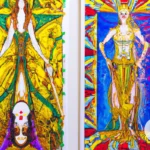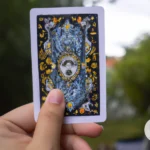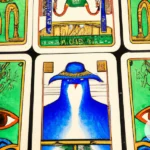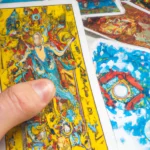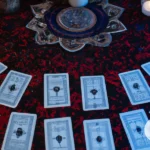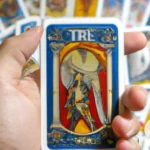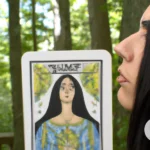Tarot cards have a long and mystical history, and have long been used as a tool for divination and self-discovery. However, not many people know that Alejandro Jodorowsky, a multifaceted artist and spiritual healer, has made significant contributions to the world of tarot. From his unique approach to tarot reading to his creation of a new tarot deck, Jodorowsky’s influence on tarot history cannot be ignored. In this article, we will delve into Jodorowsky’s life and work, as well as examine the enduring legacy he has left on the world of tarot.
Who is Alejandro Jodorowsky?
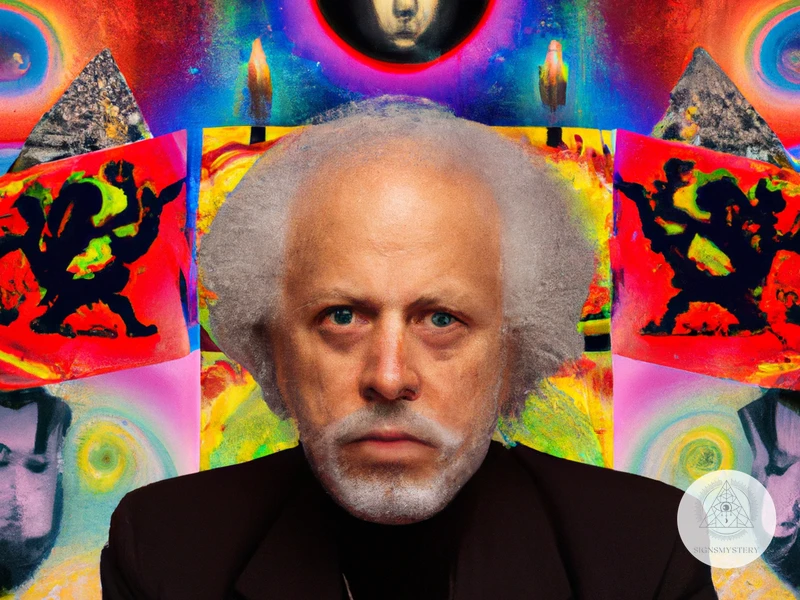
When it comes to the world of Tarot, few names have made as significant an impact as Alejandro Jodorowsky. He is a man of many talents, one who has dabbled in everything from filmmaking to spiritual healing. He has explored the far reaches of the human psyche and brought back insights that have influenced countless works of art. But what, exactly, is Jodorowsky’s relationship with Tarot? To answer that question, we first need to take a closer look at the man himself and the remarkable life he has led. No, he’s not the creator of the Waite-Smith Tarot deck nor the one who made Pamela Colman Smith’s tarot cards. He didn’t contribute to the Marseille Tarot deck significance invented by Alliette nor did he co-author any of the popular tarot books like Rachel Pollack or Mary K. Greer. Jodorowsky is a unique individual with his own perspective on Tarot, and it is that perspective that we will be exploring in this article.
A Multifaceted Artist
Alejandro Jodorowsky is **not only an acclaimed filmmaker but also a multifaceted artist** who practices various art forms such as writing, performance, and theater direction. Born in Chile in 1929, Jodorowsky started his career as a poet, and later moved on to theatre direction, film and writing. His work has been described as a unique blend of surrealism, mysticism, and social commentary.
Jodorowsky is perhaps most famous for his films, which often explore themes of spirituality, religion, and metaphysics. Some of his most notable films include “El Topo,” “The Holy Mountain,” and “Santa Sangre.” These movies have influenced generations of filmmakers, artists and musicians, and their impact continues to be felt to this day.
In addition to his work in film, Jodorowsky is also a talented writer. **He has written numerous novels and comics, many of which have become cult classics**. Most famously, he wrote the comic book series “The Incal” in collaboration with the French artist Moebius, which is considered a masterpiece of the genre.
Jodorowsky’s work in tarot, however, is perhaps less well-known. Despite this, his contributions to the field have been significant, elevating tarot to an art form and encouraging people to view it as a tool for spiritual exploration and personal growth.
A Spiritual Healer
Alejandro Jodorowsky is not only a filmmaker, but he is also a spiritual healer. Jodorowsky has been practicing psychoanalysis, Zen Buddhism, and tarot reading for over 50 years. He believes that the tarot is a tool for self-discovery, healing, and transformation.
Jodorowsky’s approach to tarot is not traditional; instead, he uses the cards as a means of spiritual and psychological exploration. For him, the tarot is a symbolic language that can reveal the hidden aspects of the psyche. He believes that the cards can help individuals to understand the ‘metaphoric language of the unconscious.’
Jodorowsky’s spiritual practices have influenced his films. In his film “The Holy Mountain,” he draws on his interest in Zen Buddhism, alchemy, and tarot. The film features a group of individuals on a spiritual journey, each represented by a tarot card.
Jodorowsky’s approach to tarot has been controversial, with some traditionalists criticizing his unorthodox methods. However, his ideas have gained a following, particularly in the New Age and spiritual communities.
Jodorowsky’s influence on tarot extends beyond his approach to reading the cards. He has also designed his own tarot deck, which incorporates his unique understanding of the cards’ symbolism. The Jodorowsky tarot takes inspiration from the traditional Marseille tarot, but with his own interpretations and illustrations.
Jodorowsky’s spiritual ideas and innovative approach to tarot have made significant contributions to the field. He has inspired others to think outside the box and use the cards as a tool for personal growth and transformation. However, his ideas are often associated with controversy and debate within the tarot community.
Alejandro Jodorowsky’s multifaceted background as a filmmaker and spiritual healer has led to his unique understanding of tarot. His methods can be seen as an influential contribution to the ever-evolving history of tarot.
A Brief History of Tarot
The origins of tarot are shrouded in mystery and remain the subject of ongoing research and debate. Some historians trace the tarot’s roots back to ancient Egypt, while others believe it was first used for divination in medieval Europe. Regardless of its exact origins, the tarot has become intertwined with spiritual practice and cultural beliefs, and its popularity endures to this day. The significance and symbolism of tarot cards have evolved over time, giving rise to different versions of the tarot deck, such as the Marseille tarot, the Waite-Smith tarot, and the Pamela Colman Smith tarot cards. Influential authors like Rachel Pollack and Mary Greer have also contributed to the understanding and application of tarot. In the following sections, we will take a closer look at the history of tarot and explore the contributions of Alejandro Jodorowsky to this ancient practice.
The Origins of Tarot Cards
The exact origins of tarot cards are not clear, and there are numerous theories about their development. Some historians trace the origins of the tarot to ancient Egypt or the Kabbalah, while others argue that the tarot evolved from various card games that were popular in Europe during the Middle Ages.
One of the most popular theories about the history of tarot comes from French occultist and tarot expert Jean-Baptiste Alliette, who published tarot decks under the name “Etteilla” in the late 18th century. Alliette claimed that tarot was an ancient Egyptian science that had been passed down through the ages. He also believed that tarot had a direct connection to the Kabbalah, and that the cards represented mystical concepts and symbols.
However, modern tarot scholars reject Alliette’s theories as unfounded and instead believe that tarot cards originated as a simple form of playing cards in medieval Europe. These cards were used for entertainment and gambling purposes, and they are believed to have been developed from similar card games that originated in the Islamic world.
Over time, tarot cards began to take on deeper symbolic meanings, particularly in 15th century Italy, where aristocrats began commissioning hand-painted decks featuring images from classical mythology and medieval Christian iconography. One of the oldest surviving tarot decks is the Visconti-Sforza deck, which dates back to the mid-15th century and features ornate illustrations of biblical scenes, saints, and mythical creatures.
Later, in the early 20th century, the Rider-Waite-Smith deck, created by Arthur Edward Waite and illustrated by Pamela Colman Smith, became one of the most popular and influential tarot decks in history. This deck featured intricate, detailed illustrations of the tarot’s major and minor arcana, and helped to popularize the use of tarot cards for divination and spiritual exploration.
Despite the many theories about its origins, tarot has remained a popular and enduring cultural phenomenon, inspiring countless artists, writers, and spiritual seekers throughout history. Authors like Rachel Pollack and Mary Greer have continued to explore the rich symbolism and unique power of the tarot, while contemporary artists and designers continue to create new tarot decks that push the boundaries of tradition and innovation.
A Brief History of the Tarot Deck
The origins of tarot cards can be traced back to the 15th century. The oldest surviving tarot cards were created for the rulers of the Visconti-Sforza family in Milan, Italy in the 1440s. These cards featured the standard suits of swords, cups, coins, and batons, as well as 16 trump cards. Over time, tarot cards began to be used for divination and fortune telling, and new decks were created with different designs and themes.
One of the most significant developments in tarot history was the creation of the Marseille Tarot deck in the 16th century by French tarot card maker Jean-Baptiste Alliette. This deck was notable for its standardized card designs, which were later adopted by other tarot card makers. The Marseille Tarot deck became the standard for tarot reading for centuries, and continues to be popular with readers today.
In the early 20th century, a new era of tarot cards began with the creation of the Rider-Waite-Smith Tarot deck. Illustrated by Pamela Colman Smith and developed by Arthur Waite, this deck featured unique designs and symbols that differed from the traditional Marseille style. The Rider-Waite-Smith Tarot became one of the most popular decks in history, and inspired many other artists and writers to create their own tarot decks.
Today, there are countless tarot decks available, each with their own unique designs and interpretations. Some notable authors in the world of tarot include Rachel Pollack and Mary Greer, who have written extensively about the history and significance of tarot cards.
Alejandro Jodorowsky’s Influences on Tarot
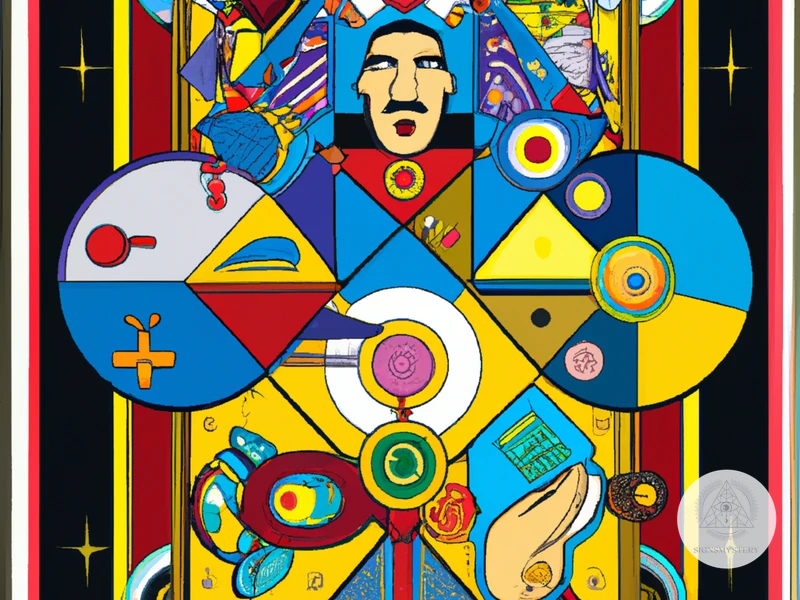
When it comes to the world of tarot, few individuals have made as lasting an impact as Alejandro Jodorowsky. The Chilean-French artist and spiritual teacher has taken his multifaceted approach to life and applied it to the study and practice of the tarot. Jodorowsky’s contributions to the world of tarot go beyond the creation of a new tarot deck. His unique approach to tarot reading and interpretation has influenced countless individuals seeking guidance and insight through the cards. In this section, we will explore Jodorowsky’s influences on tarot, taking a closer look at his approach to tarot reading, his films and how they are shaped by tarot, and his interpretations of tarot symbolism. We will also take a closer look at his creation of a new tarot deck and the impact it has had on the world of tarot.
Jodorowsky’s Approach to Tarot Reading
Alejandro Jodorowsky has a unique approach to tarot reading that sets him apart from other tarot practitioners. Jodorowsky views the tarot deck as a tool for self-discovery and spiritual growth rather than a means of divination. He sees the cards as a representation of the collective unconscious and an opportunity for individuals to explore their innermost thoughts and emotions.
Jodorowsky stresses the importance of the relationship between the tarot reader and the person receiving the reading. He believes that the reader must be deeply connected to the cards and their symbolism in order to provide a meaningful reading. He also emphasizes the importance of the person receiving the reading being open and receptive to the messages conveyed by the cards.
One of Jodorowsky’s key contributions to tarot reading is his emphasis on the use of imagination during a reading. He suggests that the reader should encourage the individual receiving the reading to use their imagination to connect with the symbols and images on the cards. By doing so, the individual can tap into the deeper, subconscious meanings associated with the cards, leading to a more profound understanding of their own psyche and life journey.
Jodorowsky was heavily influenced by the work of occultist Eliphas Levi, who pioneered the use of tarot as a tool for inner reflection and personal growth. Levi’s ideas heavily informed Jodorowsky’s approach to tarot reading, which emphasizes the importance of self-reflection and self-awareness in the journey towards spiritual enlightenment.
By eschewing traditional divination techniques in favor of a more introspective approach, Jodorowsky has left his mark on the world of tarot. His unique perspective has influenced other notable tarot authors, such as Rachel Pollack and Mary Greer, who have built upon his ideas to create their own distinctive approaches to tarot reading. Today, Jodorowsky’s approach remains influential and relevant, inspiring new generations of tarot enthusiasts.
The Holy Mountain: A Film Shaped by Tarot
“The Holy Mountain”, a surrealistic film directed by Alejandro Jodorowsky, showcases his unique approach to the tarot. The film features a character known as The Alchemist, who is based on Jodorowsky himself and serves as the guide for the film’s protagonist. The Alchemist leads the protagonist on a journey through the Major Arcana of the tarot, each step of the way representing a different card.
In one particularly memorable scene, The Alchemist uses the images of the Marseille Tarot to demonstrate the spiritual unity of all things. The scene shows each card from the Major Arcana spread out on a table, with The Alchemist interpreting their significance. Jodorowsky’s use of the tarot in this scene serves to emphasize the interconnectedness of all things, a theme that is present throughout the film.
The film also features references to other tarot decks, including the Rider-Waite and the Thoth Tarot. However, Jodorowsky’s interpretation of the tarot is unique to his own personal understanding of the cards. Through “The Holy Mountain”, Jodorowsky demonstrates his belief in the transformative power of the tarot and the ability of the cards to lead individuals on a journey of self-discovery.
It is important to note that while Jodorowsky’s use of the tarot in “The Holy Mountain” is significant, it is not the only time he has explored the tarot in his work. Throughout his career as an artist, spiritual healer, and writer, Jodorowsky has continued to draw inspiration from the tarot and incorporate its symbolism into his creations.
| Related Links: | Pamela Colman Smith Tarot Cards | Marseille Tarot and Significance of Alliette | Rachel Pollack and Mary Greer Tarot Authors |
|---|
Jodorowsky’s Take on Tarot Symbolism
Alejandro Jodorowsky’s take on tarot symbolism is both complex and unique. He believes that each tarot card represents an aspect of human experience and that the goal of reading the cards is to gain a deeper understanding of oneself. Here are some of the key elements of Jodorowsky’s approach to tarot symbolism:
- Depiction of Archetypes: Jodorowsky sees the tarot as a depiction of universal archetypes that are present in all of our lives. He believes that the characters and symbols on the cards represent various aspects of the human psyche and that through studying the cards, one can gain insight into their own psyche as well.
- Multiplicity of Meanings: Unlike some tarot readers who see the cards as having a fixed meaning, Jodorowsky sees the symbolism on each card as having multiple layers of meaning. He urges readers to approach the cards with an open mind and to use their intuition to interpret the symbols in a way that is personally meaningful to them.
- The Fool: Jodorowsky places a particular focus on the Fool card, which he sees as representing the beginning of the journey of self-discovery. Hebelieves that the Fool represents the innate human desire to explore the unknown and emphasizes the importance of embracing this desire in order to grow and evolve.
Subscribe to Our Newsletter
Sign up to receive the latest news and updates.
- Tarot as a Therapeutic Tool: Jodorowsky sees the tarot as a powerful tool for self-reflection and personal growth. He believes that by working with the images on the cards, one can gain insight into their own strengths and weaknesses, as well as their unconscious desires and motivations.
Jodorowsky’s approach to tarot symbolism is one that emphasizes personal exploration and a deep connection to the archetypal symbols present in the tarot deck. While his ideas may be unconventional, they have had a profound impact on the way that many people view the tarot and its potential as a tool for self-discovery.
Jodorowsky’s Creation of a New Tarot Deck
Alejandro Jodorowsky’s contributions to tarot history go far beyond his approach to reading and interpretation. In 1995, Jodorowsky collaborated with French artist Philippe Camoin to create a new tarot deck that blended the traditional Marseille tarot with Jodorowsky’s own interpretations and symbolism. This collaboration resulted in the creation of the Jodorowsky-Camoin Tarot Deck.
The Inspiration Behind the Deck
Jodorowsky’s inspiration behind the deck was to create a tarot deck that would be accessible to anyone, regardless of their knowledge of tarot. The deck was designed so that it would be easy to read and understand, while still retaining the spiritual and metaphorical depth of traditional tarot decks.
The Design of the Deck
The Jodorowsky-Camoin Tarot Deck features illustrations that are rich in symbolism and detail. Each card is a unique work of art that tells a story and carries a message. The deck is based on the Marseille tarot, but with the addition of Jodorowsky’s own interpretations of the cards.
Unique Features of the Deck
One of the unique features of the Jodorowsky-Camoin Tarot Deck is the inclusion of extra cards that are not typically found in other tarot decks. These cards include The Master, The Law, The Joker, and The Egg, which Jodorowsky saw as essential to his new interpretation of the tarot.
Another unique feature of the deck is the inclusion of the number 78 on the back of each card. Jodorowsky believed that the number 78 represented the totality of the universe, and he wanted this idea to be reflected in the design of the deck.
The Legacy of the Deck
The Jodorowsky-Camoin Tarot Deck has become a popular choice for many tarot readers and enthusiasts, both for its unique design and for the spiritual and metaphysical depth of its interpretation. The deck continues to be a testament to Jodorowsky’s visionary approach to tarot, and to his enduring legacy in the world of mysticism and spirituality.
Jodorowsky’s Enduring Legacy
As time passed, Alejandro Jodorowsky’s contributions to the world of tarot continued to resonate with enthusiasts and opponents alike. Despite his controversial reputation, there is no denying the impact Jodorowsky has had on tarot history. From his unique approach to tarot reading to his creation of a new tarot deck, Jodorowsky’s legacy is one that endures even to this day. Let’s explore the enduring influence of this multifaceted artist and spiritual healer.
A Controversial Figure and His Impact on Tarot
Alejandro Jodorowsky is a controversial figure in the world of tarot. Some critics have dismissed his contributions as mere sensationalism or self-promotion, while others consider him a visionary who has breathed new life into the traditional practice of tarot reading. One thing is certain: Jodorowsky’s impact on the tarot world is undeniable and still felt today.
On one hand, Jodorowsky has been criticized for using his tarot readings as a platform for self-promotion. Some skeptics claim that his tendency to make grandiose statements about his abilities and insights are nothing more than theatrical stunts designed to draw in crowds.
On the other hand, many of Jodorowsky’s supporters argue that his unorthodox approach to tarot has helped to make the practice more accessible and relevant to modern audiences. By incorporating elements of psychology, spirituality, and even surrealism into his readings, Jodorowsky has opened up new avenues for interpreting the cards and exploring their symbolic meanings.
Additionally, Jodorowsky’s creation of his own tarot deck has also been a point of controversy. While some critics have dismissed the deck as a mere novelty, others praise its intricate and thought-provoking imagery.
Despite the mixed reactions to Jodorowsky’s work, there is no denying that he has left a lasting impact on the tarot world. His willingness to experiment and push the limits of traditional tarot practice has inspired countless practitioners to delve deeper into the mysteries and meanings of the cards.
The Continued Popularity of the Jodorowsky Tarot Deck
Despite its controversial creator, the Jodorowsky Tarot Deck remains a popular choice among tarot enthusiasts. This is largely due to the unique and innovative approach that Jodorowsky brought to the creation of the deck.
One factor contributing to its popularity is the stunning artwork featured on every card. Each one was meticulously crafted by artist and collaborator, Philippe Camoin, using a combination of digital and traditional techniques. The result is a deck that is both visually striking and rich in symbolism.
Another reason for the continued popularity of the Jodorowsky Tarot Deck is its effectiveness as a tool for self-discovery and personal growth. Jodorowsky’s approach to tarot reading emphasized the importance of intuition and interpretation over strict adherence to traditional meanings. This makes the deck a useful tool for those seeking to explore their inner selves and gain insight into their own lives.
The deck has also gained a following among fans of Jodorowsky’s other works, such as his films and books. The inclusion of characters and themes from these works in the deck only adds to its appeal for these fans.
Despite its enduring popularity, the Jodorowsky Tarot Deck remains a controversial choice for some. However, for those willing to look past its creator’s controversial history, it remains a powerful and inspiring tool for tarot enthusiasts and spiritual seekers alike.
| The Continued Popularity of the Jodorowsky Tarot Deck | |
|---|---|
| Reasons for Popularity | Explanations |
| Stunning Artwork | Each card was crafted with a combination of digital and traditional techniques resulting in a visually striking and symbolically rich deck. |
| Effectiveness as a Self-Discovery Tool | Jodorowsky’s approach to tarot reading emphasizes intuition and interpretation, making it a useful tool for exploring one’s inner self and gaining insight into one’s own life. |
| Connection to Jodorowsky’s Other Works | The inclusion of themes and characters from Jodorowsky’s other works in the deck adds to its appeal for fans of his films and books. |
| Controversy | The deck’s controversial creator may deter some from using it, but for those willing to look past this, it remains a powerful and inspiring tool for tarot enthusiasts and spiritual seekers. |
Conclusion
In conclusion, Alejandro Jodorowsky’s contributions to the world of tarot cannot be overstated. As a multifaceted artist and spiritual healer, Jodorowsky brought a unique perspective and understanding to the tarot deck. His approach to tarot reading emphasized the individual’s personal journey and interpretation of the cards, rather than relying solely on traditional symbolism and meanings.
Jodorowsky’s work on the film “The Holy Mountain” showcased his deep understanding of tarot symbolism and its ability to shape creative endeavors. His creation of a new tarot deck, the Jodorowsky Tarot Deck, further solidified his impact on the tarot world.
While Jodorowsky’s controversial reputation may have initially caused some pushback against his tarot teachings, his enduring legacy speaks for itself. The Jodorowsky Tarot Deck continues to be popular among tarot enthusiasts and his approach to tarot reading has influenced many other practitioners.
Overall, Jodorowsky’s contributions to tarot have expanded the possibilities and interpretations of the tarot deck, making it a more personal and reflective tool for individual growth and understanding.
Frequently Asked Questions
What is the meaning of the tarot cards?
The meaning of tarot cards varies depending on the interpretation and the context of the reading. Generally, tarot cards represent different aspects of life, situations, people, and emotions, which can offer insight and guidance to the person receiving the reading.
Who can read the tarot cards?
Anyone can learn to read the tarot cards, but it takes practice, intuition, and a good understanding of the symbolism and meaning of each card. Some people believe that certain individuals, such as psychics, are better suited to read the tarot, but ultimately, it comes down to the individual’s ability to connect with the cards.
What is the difference between the Jodorowsky Tarot and other Tarot decks?
The Jodorowsky Tarot is unique in that it was designed by Alejandro Jodorowsky himself, based on his own understanding and interpretation of the symbolism and meaning of the tarot. Unlike other tarot decks that follow traditional designs and meanings, the Jodorowsky Tarot features a more personal and intuitive approach to tarot reading.
How did Alejandro Jodorowsky become interested in tarot?
Alejandro Jodorowsky became interested in tarot when he was a young man living in Chile. He discovered a tarot deck in a bookstore and was immediately drawn to the symbolism and meaning of the cards. He began studying the tarot and incorporating it into his artwork and later, his films.
What is the significance of The Holy Mountain in Jodorowsky’s approach to tarot?
The Holy Mountain is significant because it was a film that Jodorowsky directed and produced, which was heavily influenced by his knowledge of tarot symbolism. The film includes several scenes that incorporate tarot imagery and themes, which helped to popularize his approach to tarot reading and interpretation.
How has Jodorowsky’s approach to tarot influenced the practice of tarot reading?
Jodorowsky’s approach to tarot has influenced the practice of tarot reading by emphasizing the importance of intuition, personal experience, and the use of the tarot as a tool for self-discovery and understanding. His creation of a new tarot deck and his interpretation of the symbolism and meaning of the cards has also influenced the way that many people approach and interpret tarot readings.
What is Jodorowsky’s legacy in the world of tarot?
Jodorowsky’s legacy in the world of tarot is his contribution to the understanding and interpretation of tarot symbolism, as well as the creation of a new tarot deck based on his personal interpretation of the meaning of the cards. His films and writings have also inspired many people to explore the world of tarot and use it as a tool for personal growth and self-discovery.
What are the benefits of a tarot reading?
The benefits of a tarot reading can vary depending on the individual and the context of the reading. However, some common benefits include gaining clarity and insight into a specific situation, identifying areas for personal growth and development, and receiving guidance and support in making decisions.
Are there any limitations to a tarot reading?
Yes, there are limitations to a tarot reading. Tarot readings are not a substitute for professional advice or medical care and should not be used to diagnose or treat any health or mental health condition. Additionally, the accuracy of a tarot reading can vary depending on the skill and experience of the reader, as well as the openness and receptivity of the individual receiving the reading.
Can the Jodorowsky Tarot be used for a professional reading?
Yes, the Jodorowsky Tarot can be used for a professional reading. While it is a unique and personal interpretation of the tarot, it still follows the basic structure and symbolism of traditional tarot decks, which makes it suitable for professional use. However, it is important to note that the accuracy and effectiveness of the reading may depend on the reader’s familiarity with the Jodorowsky Tarot and their ability to accurately interpret its symbolism and meaning.



